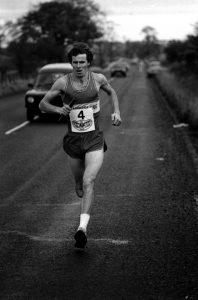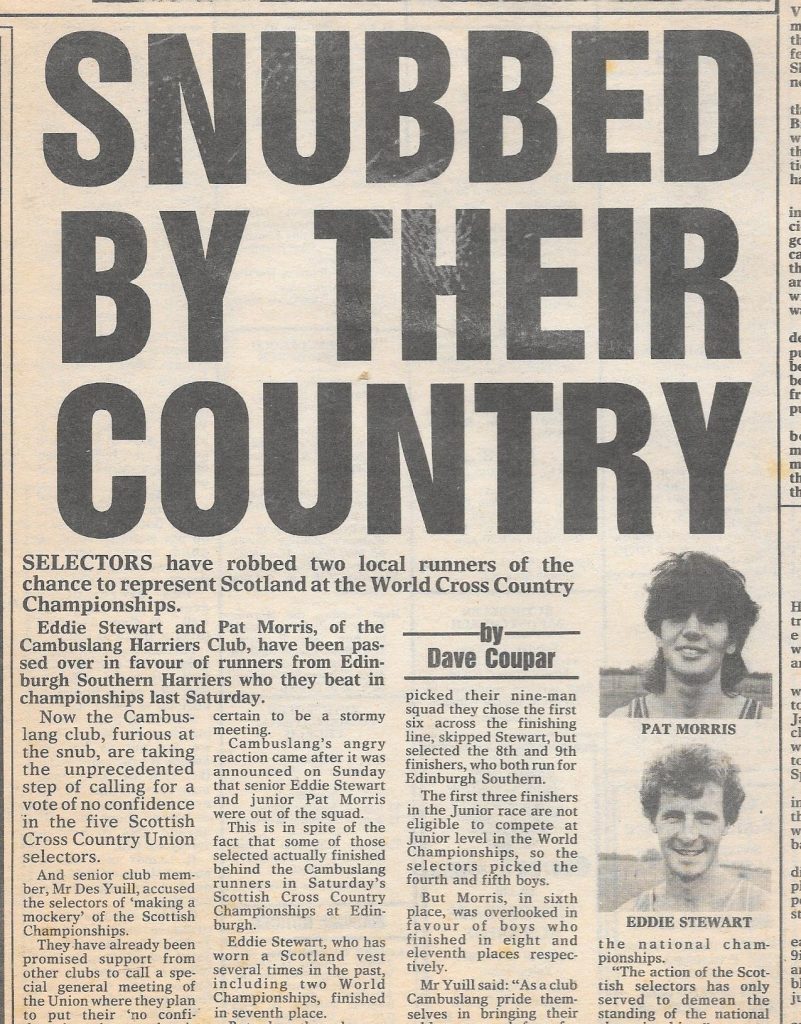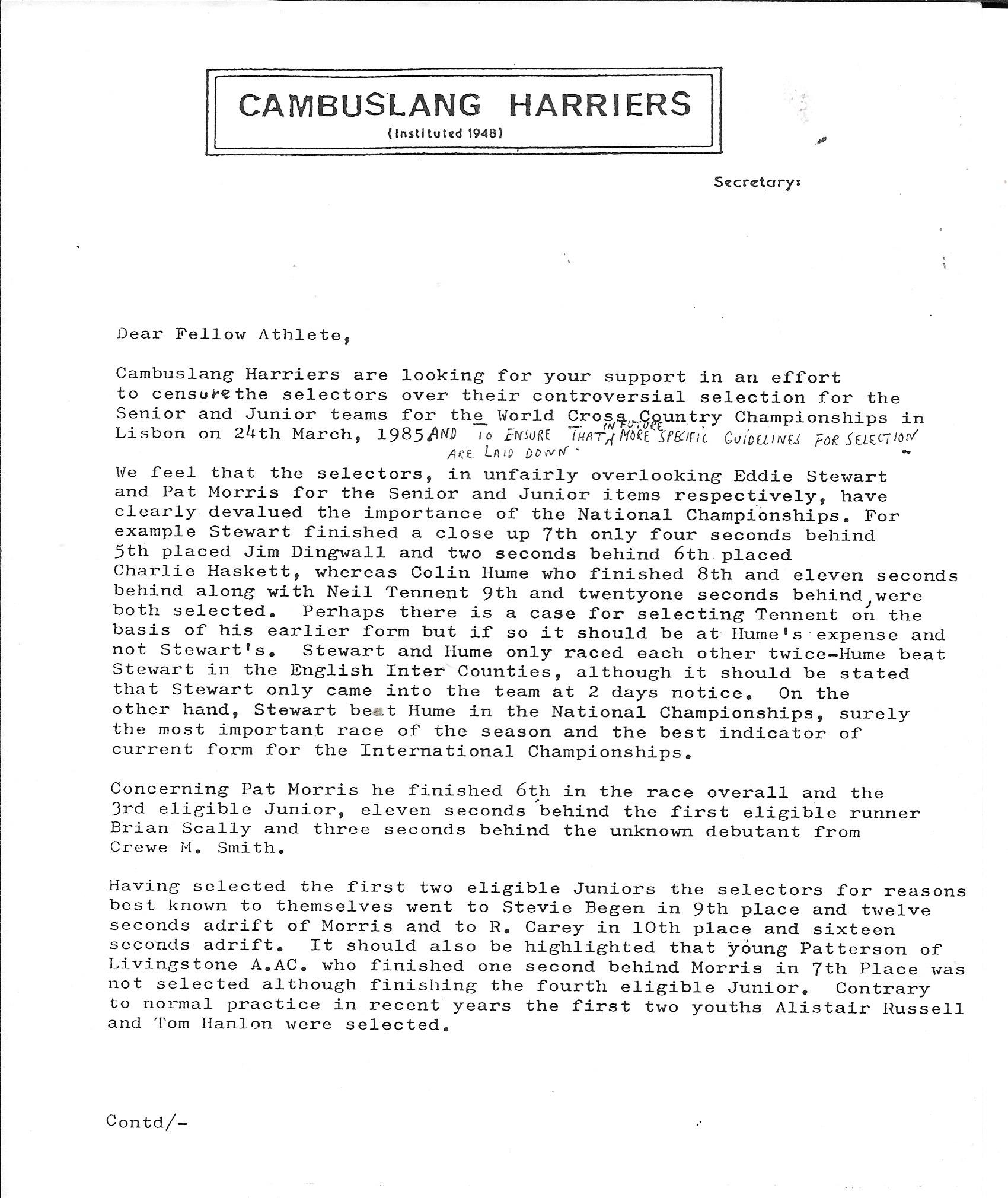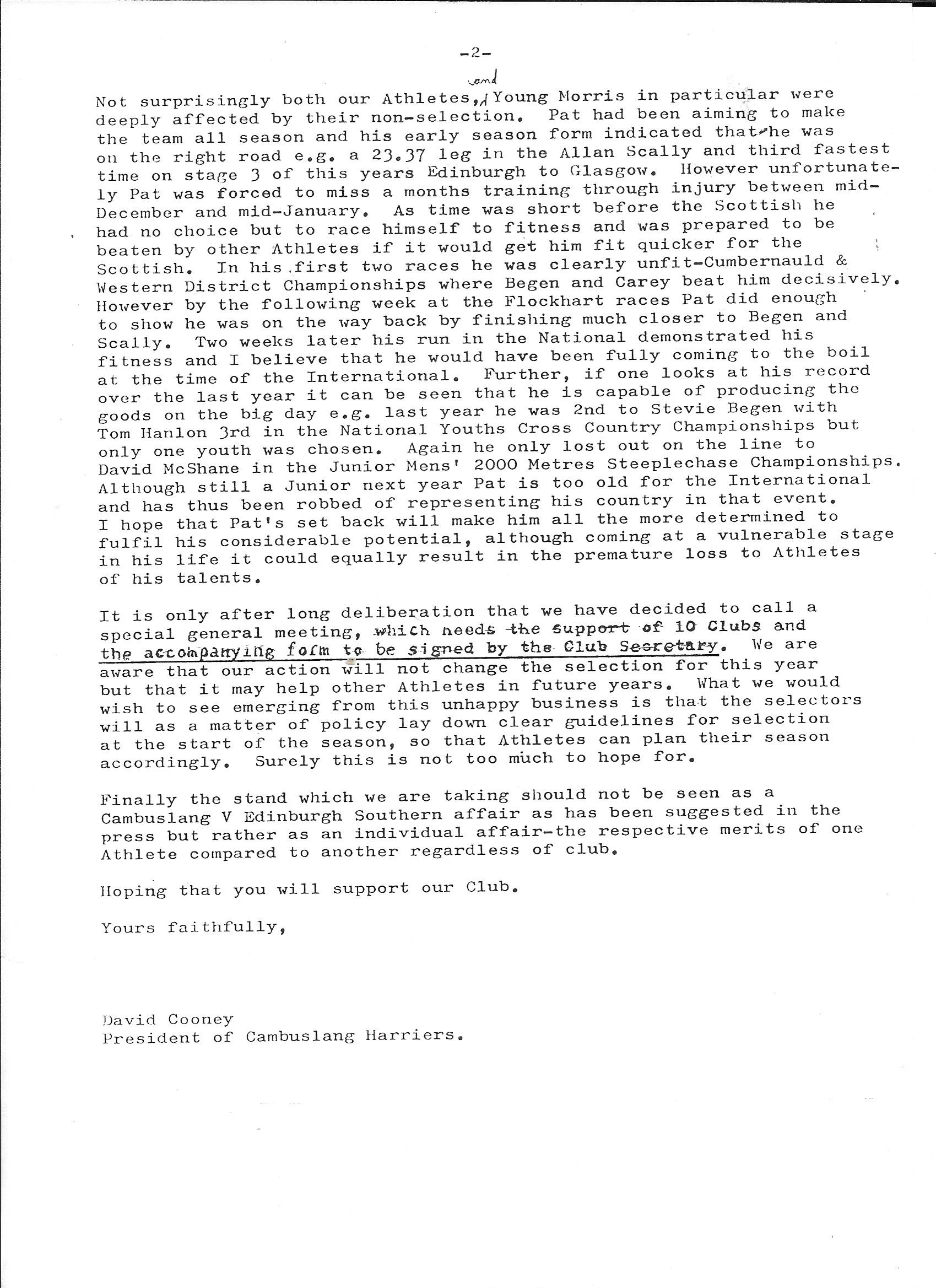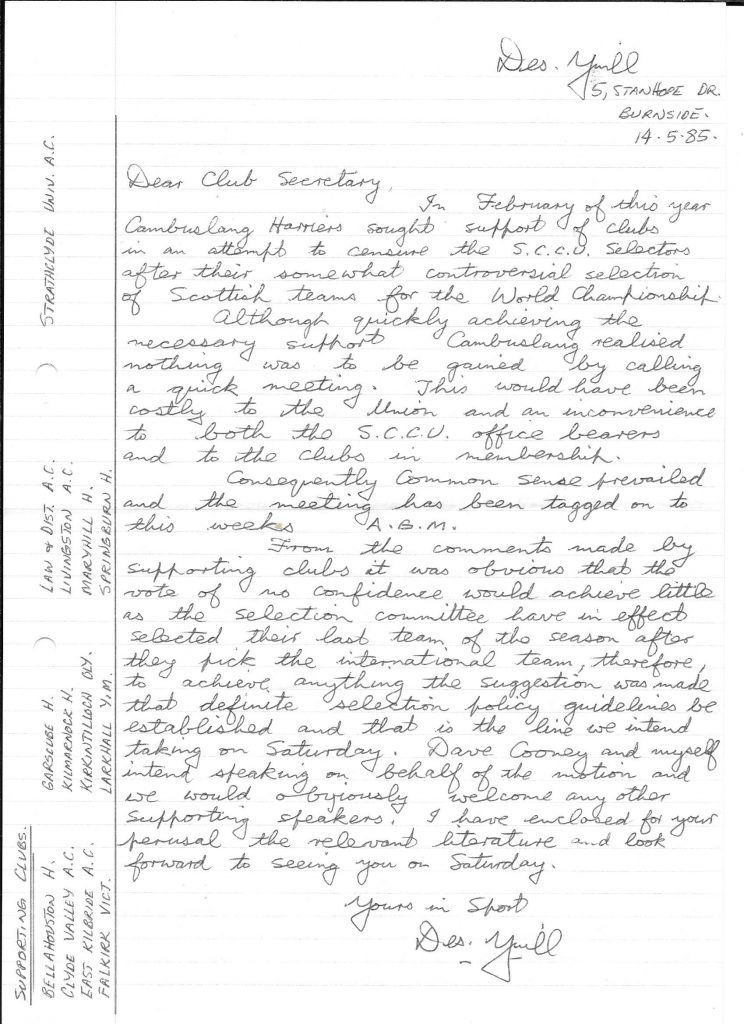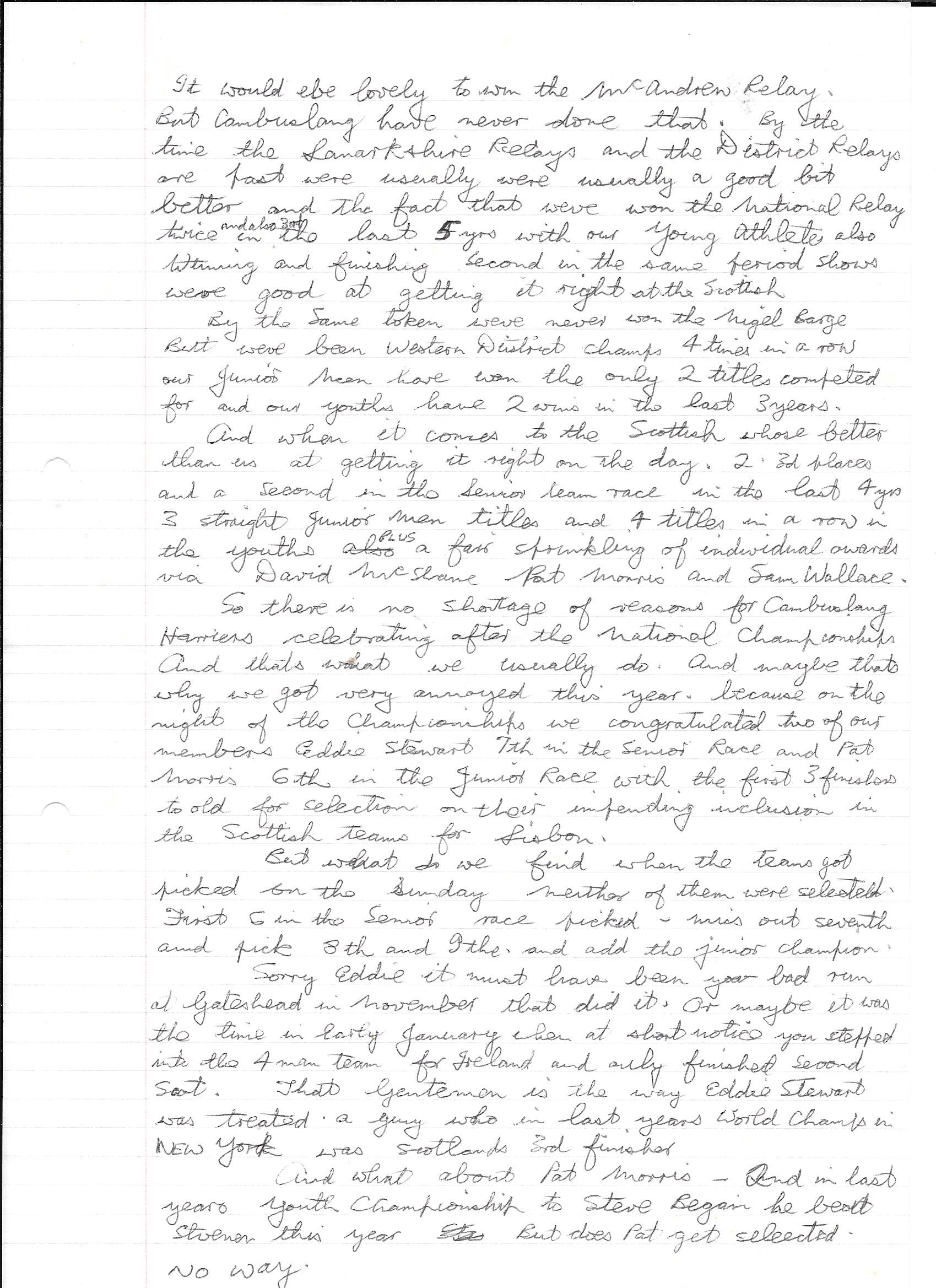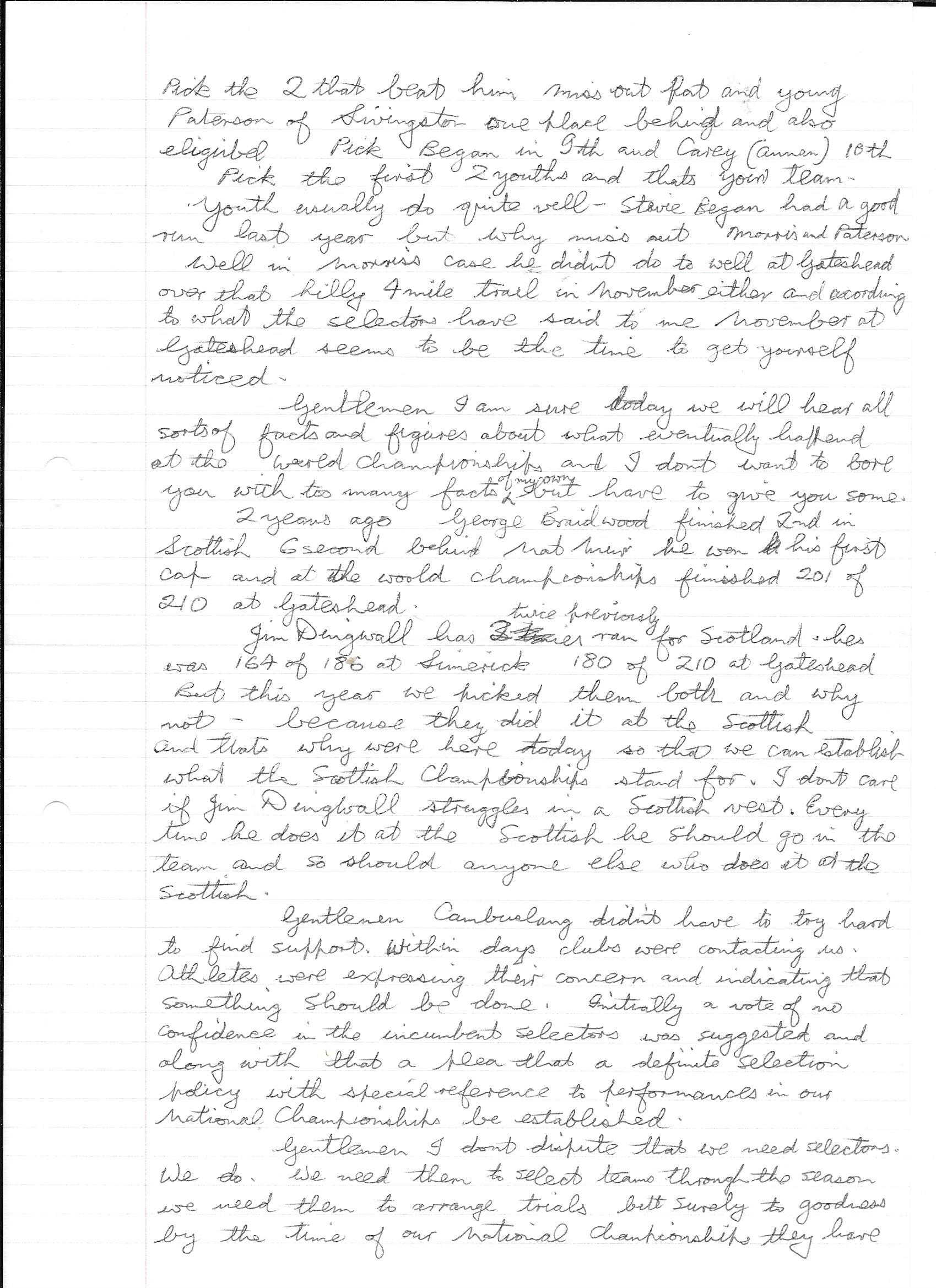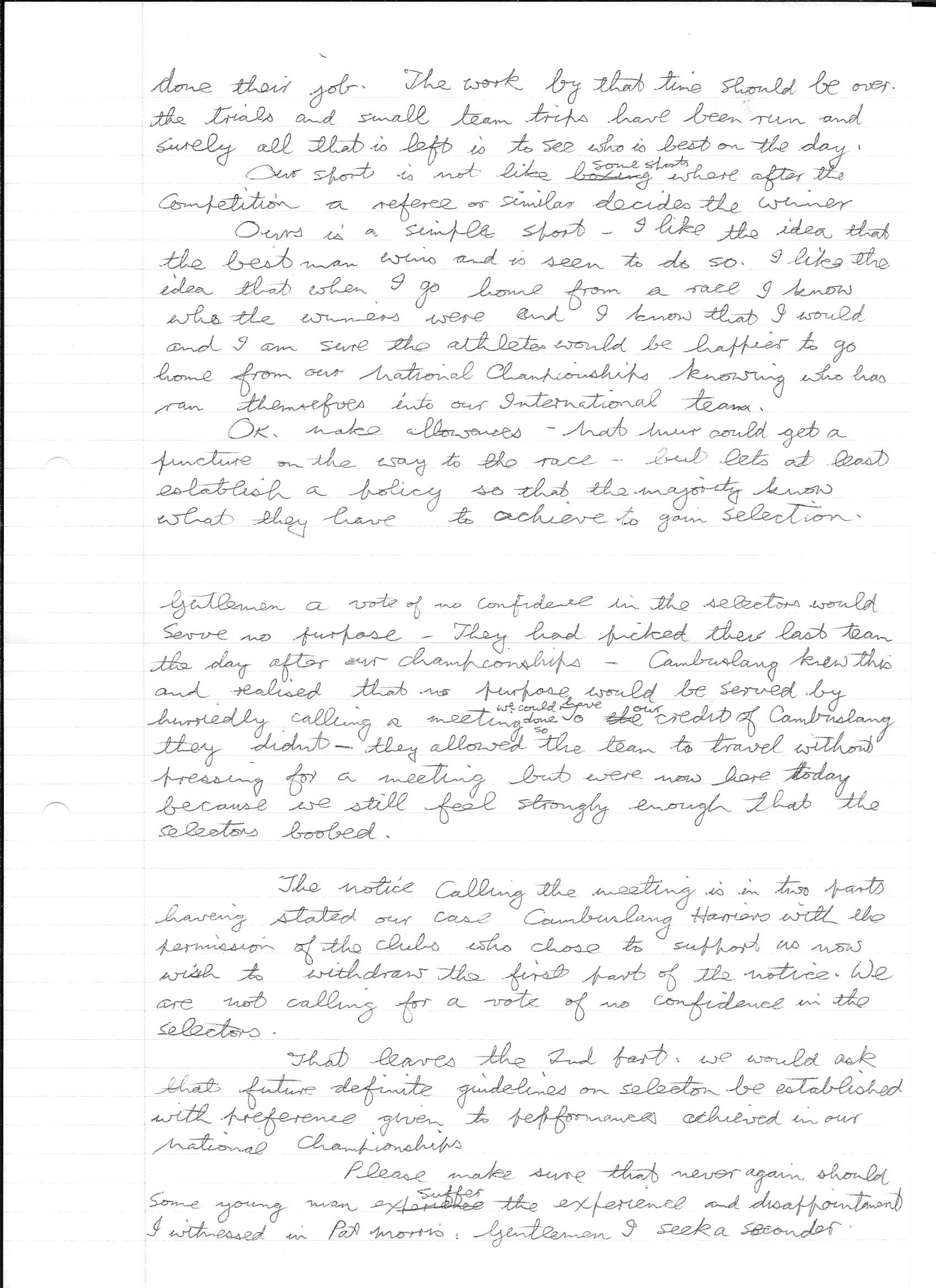Eddie Stewart
For decades the high spot of the cross country season was the International Cross-Country Championship. Anyone with any pretensions wanted to make the team and worked really hard to do so. There were, as is natural with any event as prominent as this one, sometimes problems and controversies that arose. eg the choice of venue for the 1978 world cross-country championship. The commonest cause for disagreement however was team selection. In 1985 there was what was possibly the biggest and most controversial selection ever.
The teams were chosen in the main following the results of the National Cross-Country Championships. The Scottish squad was usually selected after the race with the names of those chosen in the Press on Monday morning. There were exceptions – on occasion a top runner was injured or had some minor ailment such as the ‘flu or a cold, and was counted in the team on the basis of form throughout the year. Grumbles were commonplace, scandals were rare.
The National at the Jack Kane Sports Centre in Edinburgh on 23rd February, 1985, was a good exciting race over a mixed course including farmland and good grass running. It was won for the sixth time by Nat Muir of Shettleston from John Robson of Edinburgh Southern Harriers. The first nine men home, in order, were Muir, Robson, Ross Copestake (Dundee), George Braidwood (Bellahouston), Jim Dingwall (Falkirk Victoria), Charlie Haskett (Dundee), Eddie Stewart (Cambuslang), Colin Hume (ESH) and Neil Tennant (ESH). So far so good. The team selected for the International in Lisbon on 24th March consisted of Muir, Robson, Copestake, Braidwood, Dingwall, Haskett, Hume and Tennant plus Robert Quinn, winner of the Junior race. Stewart had been left out. Those selected had finished in the National in 1st, 2nd, 3rd, 4th, 5th, 6th, 8th and 9th positions. It looked like a clear case of favouritism.
Worse was to come but first, a word of explanation. Because the Scottish age group dates were different from the international age group birth dates, there were always some highly placed Scots who could not be selected because of this discrepancy. The Junior team selected was Begen (Springburn), Carey (Annan), Hanlon (ESH), Russell (Law), Scally (Shettleston) and Smith (Winsford). Those who were at the race, and those who were not there but perused the results with any care, noticed that one athlete was omitted who would, on previous years’ criteria, have been selected was Pat Morris of Cambuslang. Pat had been sixth in the Junior race, fourth in the international age group runners, and was left out.
Two Cambuslang Harriers omitted from the Scottish teams for the major event of their winter season after ostensibly qualifying for the race. The local paper led with this article:
The runners concerned were both liked and respected in equal measure by their peers. Nobody in Scottish athletics had a bad word to say for Eddie who was one of the quietest men in the sport, never boasting about his achievements although he had quite a lot to boast about. Pat was a cheery, friendly young man who always seemed to be laughing or having a good time. They were both hard runners who never gave anybody an easy race and both had plenty of talent. There seemed no obvious reason for their exclusion from the teams.
Cambuslang Harriers were not happy with this turn of events and Des Yuill. one of Scottish road and cross-country’s longest and hardest working officials, was their spokesman. In the Glasgow Herald on Friday, 28th February, Stewart McIntosh wrote as follows:
“Cambuslang Harriers are pressing for a motion of no confidence in the SCCU’s selection committee after two Cambuslang runners were passed over for the Scottish Junior and Senior teams at the world cross-country championships. The teams were selected after last Saturday’s Scottish National Cross-Country Championships in Edinburgh. Cambuslang’s Eddie Stewart was not among the nine selected for the senior team despite finishing seventh on Saturday. The first six men home were selected, however, Stewart, who finished only three seconds behind Haskett, was ignored while Colin Hume and Neil Tennant, both of Edinburgh Southern, were selected although they finished in eighth and ninth positions, 20 seconds behind Stewart. The winner of the Junior race, Robert Quinn of Kilbarchan, was also selected.
In naming the six man junior team the selectors similarly by-passed Cambuslang’s Pat Morris who finished sixth in the junior championship race. Because of a age disqualification, the first three finishers were too old to run internationally as juniors. The selectors picked the fourth and fifth finishers, but ignored Morris, who was only three seconds behind. Again they reached back into the field for the eighth and eleventh finishers in the Youths race. It is usual to give a position to the first youth only, and the beneficiary of this unusual move is Tom Hanlon of Edinburgh Southern, who was second youth.
Cambuslang officials are incensed at what they see as a lack of reward for good performances in the “national” and they feel particularly aggrieved that three Edinburgh Southern men have been selected in the face of better performances by Cambuslang runners. “We are not doing this to force a re-selection,” says Des Yuill of Cambuslang Harriers, “But we want to ensure that a proper and fair selection procedure is set up for future years.”
The motion of no confidence needs the support of six other clubs, and Yuill is confident that he will have these by the weekend. The Scottish Cross-Country Union will then have to hold a special meeting to discuss the matter within 14 to 21 days and that would force the issue before the Scottish squad travels to Lisbon.”
Des Yuill and Jim Scarbrough of Cambuslang had been involved in athletics for decades – they had both been runners and raced for their clubs in all the main races – McAndrew Relays, Nigel Barge Road Race, county and district relays and so on – but their real worth to Scottish athletics was as officials and administrators. They had held positions in club, District and National committees of the SAAA and SCCU. They knew the rules and had known the administrators that they were dealing with for some time. They knew what to do. Once they had decided to ask for a General Meeting to discuss the matter, they wrote to the other clubs. The first letter below was asking for support.
The support was quickly obtained with the clubs in support being Bellahouston, Clyde Valley, East Kilbride, Garscube, Kilmarnock, Kirkintilloch, Larkhall, Law, Livingston, Maryhill, Springburn and Strathclyde University. At this point with feelings running quite high, and athletes and officials across the country taking sides, mainly in support of the Cambuslang Two, the wise old heads of the Cambuslang Harriers committee decided to withdraw the request for a Special General Meeting in return for a slot at the Annual General Meeting of the SCCU. The following letter was sent by Des Yuill to all club secretaries.
The line to be taken by the two club representatives at the annual general meeting at the start of May, 1985, was to ask for a definite selection policy to be set out by the SCCU for the guidance of runners and clubs in future. Reasons for that were set out in the letter above. Pat Morris did travel to Lisbon and run for the team after all when one of the others withdrew through injury but Eddie had still missed out. Came the day and Des’s speech was a model of its kind. The club’s points were made, the withdrawal of the vote of no confidence repeated and the request for a definite selection policy for future teams made. The speech is worth reading again and is reproduced below;
The comments from the club as expressed above are clear, well set out and cover all the bases. The club emerged from the situation with credit. The discussion was carried on in a civilised fashion, the Union agreed to look positively at the selection procedures and all parties were satisfied – or as near satisfied as was possible in the circumstances.
